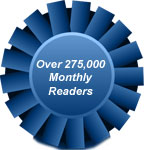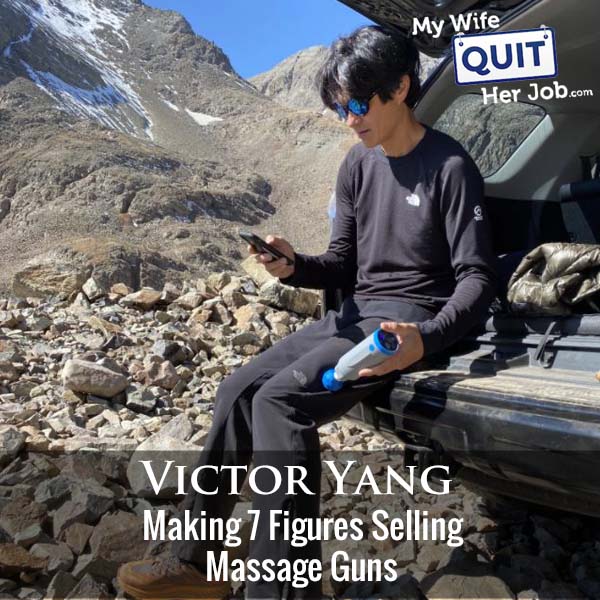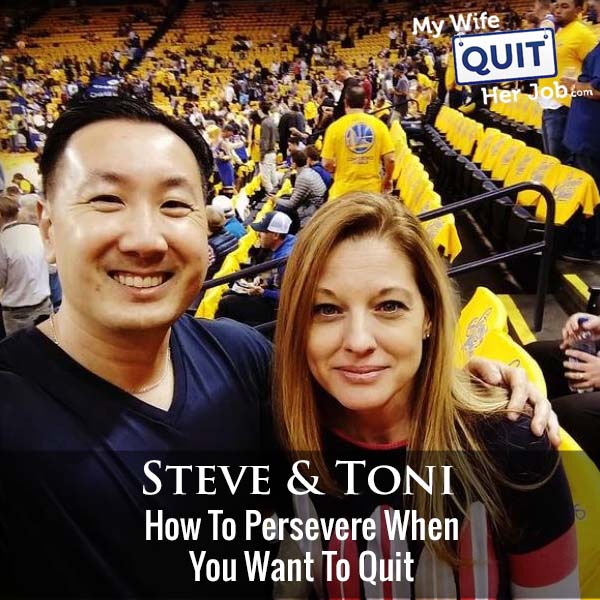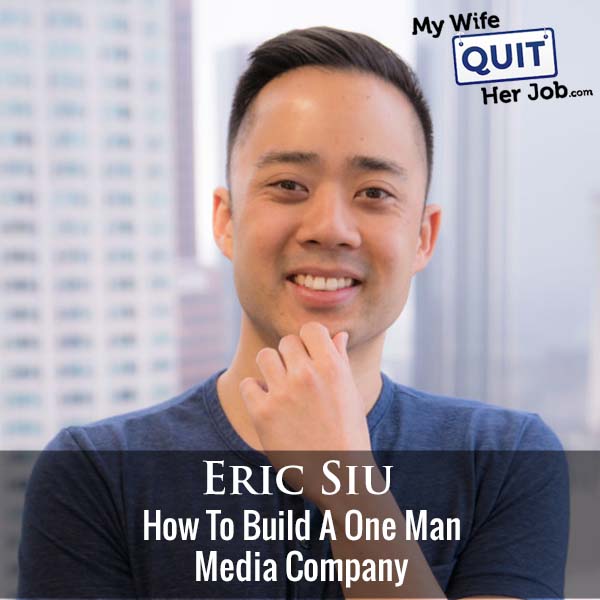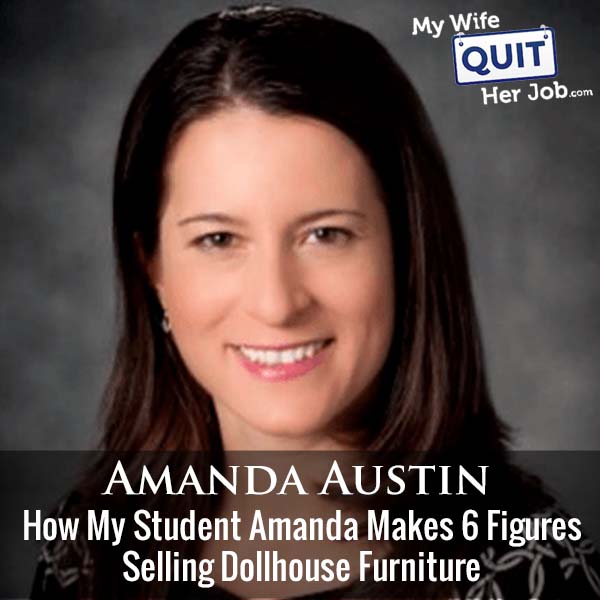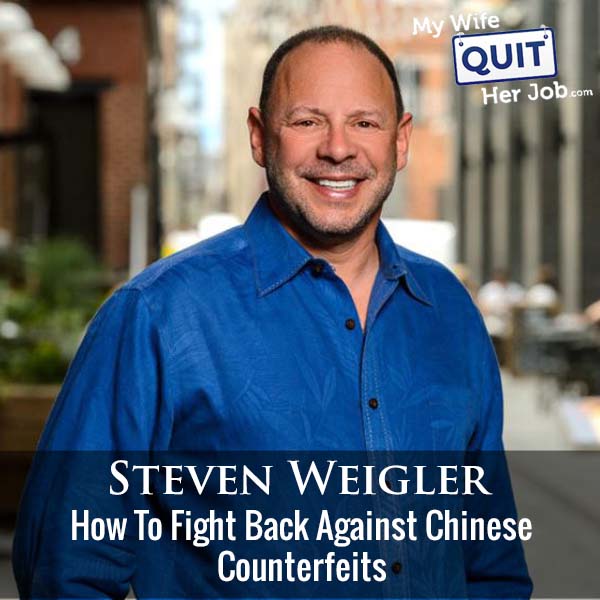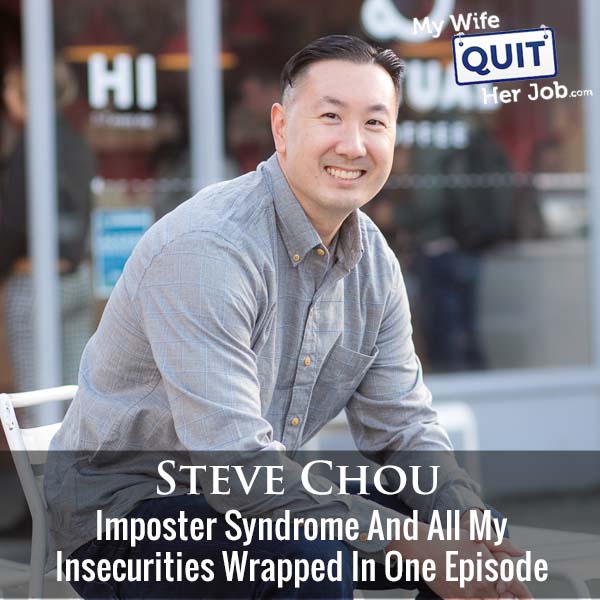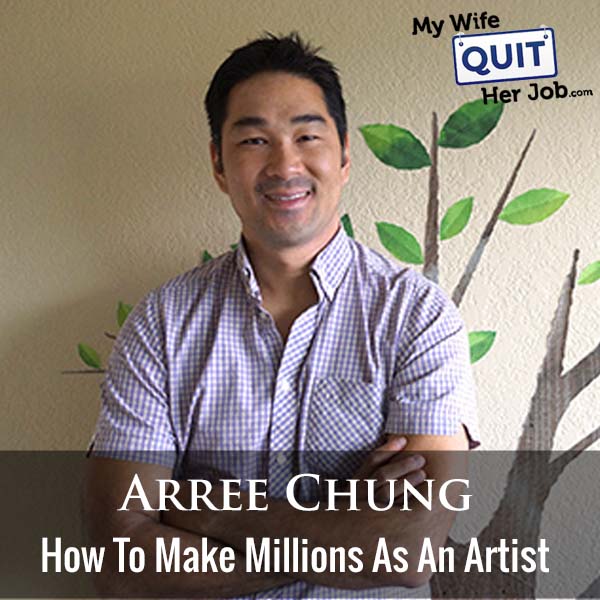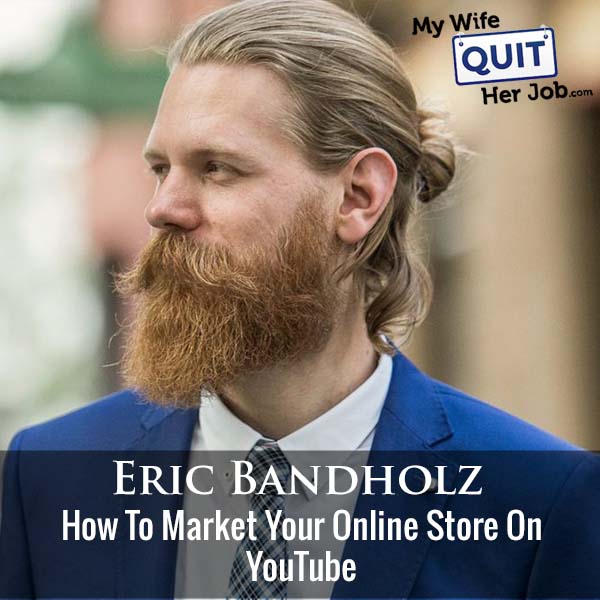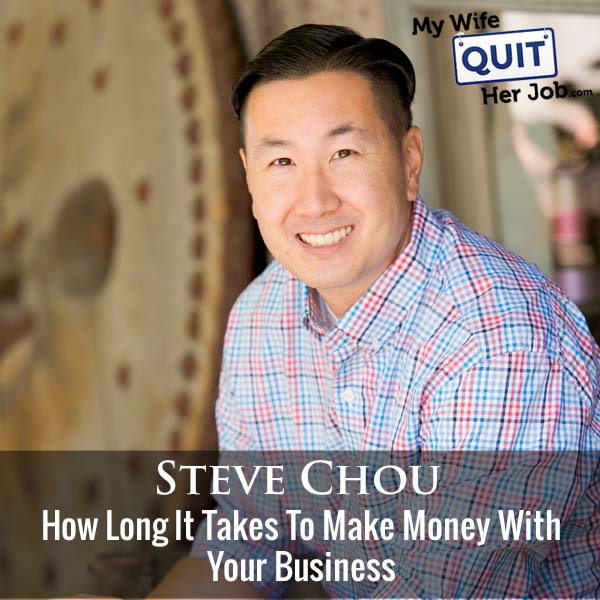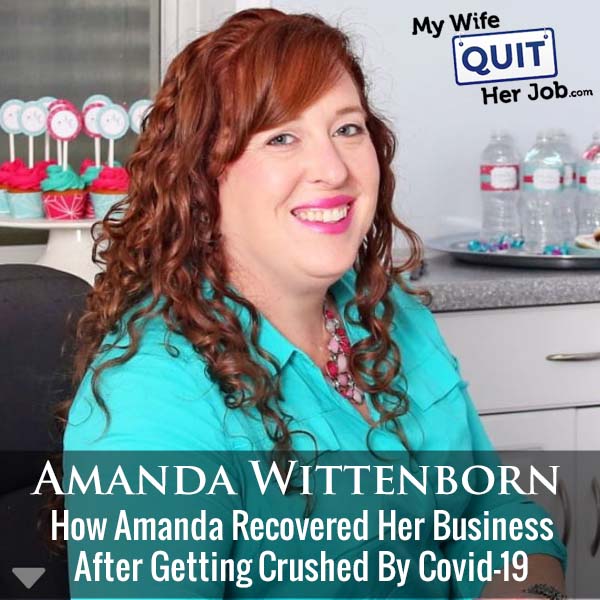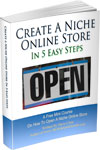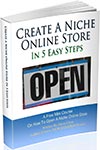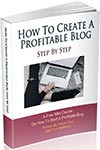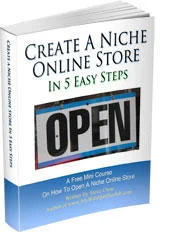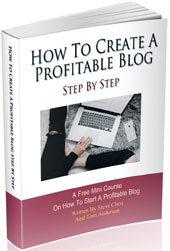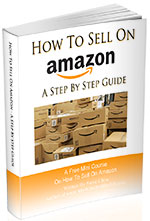Podcast: Download (Duration: 54:56 — 63.2MB)
Today, I have a very special guest on the show, my cousin Victor. Victor has started many companies in the past, but AddADay.com is the first e-commerce company he’s created that sells massage guns.
His products can be found at REI and every Target store nationwide. In this episode, we’re going to talk about how he launched his business.
What You’ll Learn
- How Vic got into e-commerce and how it led to starting AddADay.com
- Why he decided to sell massage guns
- How he created his first product
- How AddADay achieved explosive growth
Other Resources And Books
Sponsors
Postscript.io – Postscript.io is the SMS marketing platform that I personally use for my ecommerce store. Postscript specializes in ecommerce and is by far the simplest and easiest text message marketing platform that I’ve used and it’s reasonably priced. Click here and try Postscript for FREE.
Klaviyo.com – Klaviyo is the email marketing platform that I personally use for my ecommerce store. Created specifically for ecommerce, it is the best email marketing provider that I’ve used to date. Click here and try Klaviyo for FREE.
EmergeCounsel.com – EmergeCounsel is the service I use for trademarks and to get advice on any issue related to intellectual property protection. Click here and get $100 OFF by mentioning the My Wife Quit Her Job podcast.
Transcript
You’re listening to the My Wife, Quit Her Job podcast, the place where I bring on successful bootstrap business owners and dig deep into what strategies they use to grow their businesses. And today I have a very special guest on the show, my cousin. Now I just wanted to take a moment to talk about my family because I am so proud of everyone who I am related to. In fact, I kind of consider myself the black sheep of the family. So first off, my cousin Nick was a co-founder of a company in the mobile advertising space that sold for eight figures.
00:28
My other cousin, Aparke, is an accomplished physician. My brother is a judge in California and my mom discovered the cure for a rare disease. But today we’re going to talk about a different cousin, my cousin Vic. Vic is the founder of Addaday, which is an e-commerce company that sells massage therapy devices. And right now it’s a seven figure business, but it will be eight figures by the end of this year. Now this interview is valuable because if you’ve ever been interested in creating a plastic related product, you’ll learn a lot about the process today.
00:57
But before we begin, want to thank Klavia for sponsoring this episode. Now, are you working around the clock to build the business that you always imagined? Do you want to communicate with your fast growing list of customers in a personalized way, but in a way that gives you time to work on the rest of your business? Do you ever wonder how the companies you admire, the ones that redefine their categories do it? Companies like Living Proof and Chubbies. Well, they do it by building relationships with their customers from the very beginning, while also evolving in real time as their customers needs change.
01:25
These companies connect quickly with their customers to collect their information and start creating personalized experiences and offers that inspire rapid purchase, often within minutes of uploading their customer data. Now, Klaviyo empowers you to own the most important thing for any business, the relationship between you and your customers and the experiences you deliver from the first email to the last promotion. To learn more about how Klaviyo can help you own your growth, visit klaviyo.com slash my wife. That’s klaviyo.com slash my wife.
01:55
I also want to thank Postscript for sponsoring this episode. Now, if you run an e-commerce business of any kind, you know how important it is to own your customer contact list. This is why I’m focusing a significant amount of my efforts on SMS marketing. SMS or text message marketing is already a top five revenue source for my e-commerce store. And I couldn’t have done it without postscript.io, which is my text message provider. Now, why did I choose Postscript? It’s because they specialize in e-commerce stores and e-commerce is their primary focus.
02:22
Not only is it easy to use, but you can quickly segment your audience based on your exact sales data and implement automated flows like an abandoned cart at the push of a button. Not only that, but it’s price well too, and SMS is the perfect way to engage with your customers. So head on over to postscript.io slash Steve and try it for free. That’s P-O-S-T-S-E-R-I-P-T dot I-O slash Steve. And then finally, I wanted to mention a brand new podcast that I recently released with my partner, Tony.
02:49
Now, unlike this podcast where I interview successful entrepreneurs in e-commerce, the profitable audience podcast covers all things related to content creation and building an audience. Now, no topic is off the table and we tell it like how it is in a raw and entertaining way. So be sure to check out the profitable audience podcast on your favorite podcast app. Now onto the show. Welcome to the My Wife, Quit Her Job.
03:14
podcast, where we’ll teach you how to create a business that suits your lifestyle so you can spend more time with your family and focus on doing the things that you love. Here’s your host, Steve Chu.
03:28
Welcome to the My Wife, Quit a Job podcast. Today I’m thrilled to have my cousin Victor on the show. Now, most of you don’t know this about me, but my cousins are probably the most entrepreneurial people that I know. And Victor has actually started a bunch of companies in the past, but he’s currently running Addaday.com, which is a company that sells massage guns to roll out the knots in your calf, back, shoulder, and fight muscle tightness. And in fact, if you are a runner or an athlete, chances are you’ve encountered his products at your local running store, REI, or even Target.
03:58
Yeah, so that’s right. His massagers are at REI and every Target store nationwide. In any case, I believe this is probably the first guest that I’ve had on the podcast that has created his own plastic molds and everything about his product from complete scratch. So today we’re going to talk about how exactly Victor launched his business. And with that, how you doing, man? Good. How are you, Steve? I am good. I’m pretty sure most of the people out there didn’t know I had a cousin. Give us a quick background. know you’ve
04:27
you’ve done a whole bunch of stuff like including physical products, but how did you kind of get into e-commerce and why massagers of all things? So I have been in the tech business for over a decade and when I actually got into the massage business, I wanted to do something completely analog, something that didn’t have connectivity and that could, that didn’t have an expiration date on it or a need for that product to be updated every six months. So compared to
04:56
tech, how would you compare e-commerce versus like the software stuff that used to work on in the past? E-commerce, have to, the relationship with the consumer is completely direct naturally. And you really have to understand who your audience is for the product to move. Because there’s no one else moving it for you except yourself. So that’s the core difference. What about in terms of investment and difficulty? I mean, raising money for any business is difficult.
05:27
And I think what I’ve learned is you have to raise money from the right investors. And if you find the right investor for your project, it’s actually quite easy. But if you’re raising money from someone who’s not interested in your product, you can spend hours with that person and reach no conclusion. Well, what was trying to get at is with these massagers, you didn’t take investment, right? I mean, this is just kind of your own thing. Yeah. No, no. And so it sounds like to me like
05:55
you don’t need nearly as much money to do an e-commerce thing as opposed to all your software ventures were venture backed, right? Yes. Yeah. Yeah. No, you’re right. Yeah. To your point, you don’t, you can start very small and then build as you go. You don’t necessarily have to commit to, you know, millions of dollars for software development to get a product out. No. So why massagers again?
06:25
The core reason was because of my passion for endurance activities. So I run a lot so I found out that Lots of runners get injured. In fact, almost all runners get injured and they need the product So I thought this would be a good product to build for runners if they needed and you know The theory or the hypothesis was correct So you’re doing a hundred mile or in a week, right?
06:52
In a couple days actually. Friday. So let me ask you a couple questions just about product development. Why did you decide, so first off when you started making these, was there any other product like it out there? Because I see massagers. exactly. Absolutely. Yeah, and that’s the inspiration, right? You look at things in the market and you try to make it better. Sometimes you evolve the product, sometimes you come up with something completely new.
07:23
So how did you come up with your product? I mean, I’ve seen massagers all over the place. It feels like a saturated market to me. yeah. I mean, almost all products today are saturated in some way, or form, right? But to answer your question, I was on a trail run in Santa Monica and I had just joined this incredible running group called the SoCal Coyotes.
07:52
I finished the run and came down to run and there was a guy there with a stick roller. It’s like a roller that looks like a stick. And it happened my first time seeing it. And I said, Hey, you know, we, that’s very familiar to me because you know, in Asia, they would have rollers like that, except it was made out of bamboo. And I asked the guy in my K, where’d you get that from? He’s like at a running store and
08:19
I said, which running story he named off, uh, you know, this running story called fleet feet. And I had never heard about a running store before. So, and I asked him, how much is it? He’s like 34 bucks. I’m like 34 bucks for that. And, that’s exactly the impetus for me to kind of go back and, I went on to Alibaba.com and looked for similar skews.
08:45
and then found a product that I thought was comparable and ordered some. And they came to my, and then I had to learn how to, you know, forward, work with a forwarder so the product could get through customs, et cetera. So that kind of was the impetus to that product. Okay. So you ultimately decided to make your own massager from scratch, right? Did you actually sell the ones you bought from Alibaba? I couldn’t sell them actually.
09:12
Okay. So I tried and the everyone that I tried to sell to say, Hey, you know, this is very similar to what I already have. I don’t need, I don’t need to buy this from you. said, why not? I’m giving you a better price and giving you a better margin. And then, you know, they got to the core of it, but you don’t have the brand. And so that kind of woke me up. And I, cause I thought it was very price driven, but you know,
09:39
I’m wrong. There’s a lot of brand recognition tied into these products that help you help separate it from the pact. You know, so I listened to what, when they said no to me, I said, well, how can I earn your business? And a lot of them said, you know, what if you made one that was like this or they gave me some design concept? said, well, if I made it like this, would you be interested? They said, absolutely. So I listened to probably 30 stores,
10:09
across California, give me input on how to design the next recovery tool they had in mind, put that together, created a mold, built the product and then showed them the product in person. And they were all happy when they saw it because it reflected what they told me. And so that gave me a foot in the door. And then I said, you know, you don’t have to pay me until the product sold. So why don’t you just sell it first?
10:38
And they said, so it’s no risk. And that’s what essentially launched the brand. So it ended up, you know, ended up selling really well. And then it went nationwide. So interesting. You decided to go into retail shops before going online. Is that right? Yes. Why is that? That’s all I knew. I really, I really didn’t have that much knowledge in e-comm. So I went where I was most comfortable, which is,
11:07
dealing with retailers. And then from there I learned how to do e-comm really quickly. Did you literally just walk into like a Fleetfeet store and just say, you want to carry these? Yes. Can you just tell me exactly, is that pretty much literally what you said? May I talk to your owner or your buyer? I like to show them some products they would be interested in. Okay. That’s it. But the Fleetfeet, I guess that’s a small running shop. it owner or is it a franchise or?
11:36
Oh, they’re franchise. They’re actually the largest network of running stores actually in the world. have over. I did not know that. Yeah. At the time they were, I think they were 70 stores strong today. They are about 180 stores nationwide. I see. So the person that you’re talking to, is it the owner or is it the. That was the owner at the, the owner of the store at the time. Okay. And then so they each kind of operate on an individual basis.
12:04
So you just gave them a bunch of units and just see how they sold and they just kept ordering more because it sold. Right. They operated, they are a franchise by the way, but they also have company owned stores. I see. Okay. And then after that, are they still on that same arrangement or was that just like a test? Like you give them units and they only pay for what sells. After that, once they know the product moves, then you move into a
12:29
a term basis. So a lot of times it’s net 30, net 60, pending on the store and the relationship. Okay. Let’s talk about product development. Your first stick massager. Can you give us an idea of how much it costs to make one of those and like what the process is like for creating the mold? Yeah, I mean, for a massager, I mean, if you if you want me to get to the pricing, I mean, these molds, so let me let me preface this by
12:58
There are different kinds of molds. There are cheap molds that you can run pop products through that will last maybe 5,000 runs and the mold will go bad. And those are inexpensive. And then there’s good molds, you know, that can last you for a really long time. And when the product comes out, you won’t see the seams, you know, it’s, it’s, it’s very clean. And so those molds are
13:27
generally into five figures. And then you can get modes in four figures. And I would never recommend that. I just don’t. And then you can get like, you know, when you get into electronics, all your modes are in the six figures by default. Really? Why is that? It’s just more components. You know, there’s just so many pieces tied into it. Okay. How much did you invest in your first product? I believe
13:57
300,000 is the starting capital for that business was actually like 80K. We built it off of 80K. Yeah. Is most of that the mold? Most of it was the mold and a lot of it was traveling. Oh, traveling. Okay. Oh, traveling. Right, right. Going to door to door, which is what you’re okay. What about just the product though? Not the traveling costs. Just literally just the mold. you can get it done for under
14:26
If you’re really smart about things under 20 K, okay, you’re good. Yeah, you can get going. How did you find a place to make the mold and manufacturer? That is a very good question. So part of it was luck. I can speak the language fluently. So I was able to get to a manufacturer that could help me build the product.
14:52
efficiently and I was able to qualify that manufacturer actually through some family friends and that gave us some confidence in what they could do. And then we actually moved, you know, I don’t know if you know this, my mom’s side, my grandpa was in the manufacturing business. So we were able to kind of look at some of their old manufacturing partners and ask them for help. Ah, no, I actually did not know that. Yeah.
15:21
So is your supplier in China or where is it? It was originally in China, correct. Okay. then now it’s somewhere else? It’s still in China. Oh, it’s still in China. We’re thinking about another area, but it’s not confirmed yet. During this whole process of making the mold, how important was it? Like, did you actually camp out in China during this process? design process? No. No.
15:50
So it was completely, so you did this remotely. How did you actually convey the design to them? So I would draw that, that part is through iteration. So you would draw something, you would send it to them. They would come back with their like a CAD drawing or yeah, CAD drawing. And then actually it started with pencil and paper. Okay. And then they would CAD draw it for you because it’s cheaper there. Right. So they,
16:19
They would put it on CAD and they sent it back to you and you say, well, this is something I’m interested in. And then they would be fine it. And then they would create a sample around it, like a CNC. And then you see if you like it. And did you have to commit to a certain amount of units to start? Not at the molding. No, the mold is the mold. You don’t have to commit to it. You just pay for the mold. OK. Yeah. And then presumably this mold is really heavy, right?
16:48
Yes. Yes. So the block, it’s a, it’s a block of metal that they carve through. Yeah. So this supplier, they’re making the mold for you and they essentially store the mold for you, Correct. So are you kind of held hostage by that factory? I think that’s a very good question. As you become, you, you need to know where the factory is.
17:18
And we actually, if you’re on that topic, we had one instance where the owner of the factory fled. Oh, really? Okay. Like literally left and the workers went on strike and they wouldn’t let any of the molds leave the factory. And we had the center representative to give them cash to take the mold out and then give it to another factory. This is a true story. Oh my goodness. Okay.
17:47
And those are in October, it was September, sorry, this was August right before delivery for Christmas products. Okay. Yeah, it does happen. So how do you prevent that? Yeah. Do you have two factories that are running the same product? If you have the financial means to do so, I would definitely argue for that. And do we, yeah, and the question is, do we do that? Absolutely. Okay.
18:15
So you do your first production run. How long does that whole process take? Just making the mold. I’m just kind of getting an idea of the timeline here. a good mold, three months. Three months, okay. And then that factory makes it for you. Is everything like pre-negotiated? Like how many units you’re going to get or do you negotiate the mold first and then talk about production? You do the mold first and then in that mold discussion, you have an ideal dollar
18:43
figure you want to hit, right? So let’s say you say, want this product to be 10 bucks. And then they go, okay, well, if you want it to be $10, your injection molding has to be this way, because we only want to shoot it once. And that will add less labor, but the mold cost will go up. And so there’s that kind of negotiation that takes place. I see. Okay. And how big was your first production run? Our first production run was 5,000 units. 5,000 units. Wow. Okay.
19:14
Is that, I mean, that seems like a lot, but yeah, it’s still not that much, right? So 5,000 times 10 is only $50,000. Well, when you don’t know whether it’s going to sell or not, but I guess you had retailers already will. Yeah, we knew, we knew that it would move. We didn’t think it would move in, you know, we knew that over time we would sell through it. Right. Right. So, but we also knew that one of the things that I would,
19:41
There’s a fine line between having enough inventory that motivates you to sell and having no inventory that motivates you very little to sell. Okay. All right. Well, I know for you, 5,000 units sounds low, like for you, because I know what unit quantities. Yeah. Yeah. Yeah. But I would, I think you could do it. think once you own the mold, you can do a 500 unit run if you wanted to.
20:11
Doesn’t matter. The problem is the factory is not going to be very anxious to produce 500 units for you, Because they have to produce like there’s different tiers of manufacturers. So you kind if you’re, if you want to be working with a tier one manufacturer, which means generally the quality delivery is the best, you’re going to have to vibe for that space. So you got to make sure you give them enough business to sustain that line. Right.
20:41
And if you ever want to switch suppliers, is moving the mold kind of a pain or? Yeah, I think generally people have this idea that if I’m going to switch suppliers, I’m going to take the mold with me. Generally, what happens is you don’t do that. You just have another set. Oh, okay. Yeah, you have another set. You should always have two sets. Interesting. At the minimum. Okay. All right. So you get your first units delivered to the stores.
21:11
Are you literally… How’s the payment terms in the beginning? do they just pay you? only. Cash only. So, just… There’s no… There’s no… You mean… You mean… Oh, okay. For the stores. Yeah. The stores is… I think when we started, we gave them like net 60. I see. So you just ping them after 60 days and then they just pay you based on the number of units and… And they either choose for you to… Okay. All right.
21:38
And then when could you start going after some of the larger guys? We actually, you know, when we didn’t really go after the larger guys, luckily they all came after us. So we’re really lucky to have REI asked us to pitch them on being a vendor. that was one of our bigger.
22:06
They found us through these running stores. They shop these running stores and they look at the latest trends. I see. we’re, know, once you, the specialty stores represent a lot of times it’s the newest, coolest things come out of specialty. So a lot of these retailers, they go to these stores to shop, you know, kind of for inspiration. And sometimes they’ll see something they like.
22:35
And in this case, they saw something they liked from Adaday and they contacted us and asked us if we wanted to meet them at a show. And we said, sure. And then we showed them some products and they said they were interested and we produced it for them. That was my next question actually. What type of marketing were you doing besides going from store to store? Were you going to like all the trade shows and everything?
23:02
There is a trade show that we would go to once a year called the running event. And that would be the only trade show we went to. And then we started to go to outdoor retailer and other niche shows like the health and fitness shows. I would say no more than three a year. Was there a positive ROI on those shows or was it mainly for networking?
23:30
Those shows are hit and miss. It depends on the staff you have on the floor. If you don’t know how to network or if you’re not willing to talk to people and be uncomfortable in making sure that people who don’t want to talk to you talk to you and so that you could create opportunities for your brand that you shouldn’t bother going. You know what I mean?
23:56
How big was your staff during all this? I remember it being pretty minimal, right? Yeah, just my wife and I were really the core. Yeah, so you guys were manning the booth probably, right? Personally, I’d imagine. Yep. Yep. Did you do any other marketing besides the retail shops and a couple trade shows? Store marketing, you know, we really made sure that we helped the store communicate our brand to the people who walked through those stores.
24:25
and they did a great job and that actually created the demand for our product online on the e-comm. I mean, what’s their incentive? Like, did you have to pay extra to get your products more visible or is there any? Do we have to pay more money? No, we, they, you know, we try to design the product so it’s catching to the eye and, and they have that, you know, they put it in a recovery session section. So that was pretty organic in nature.
24:54
Here’s what I’m getting at. Like when you go into a store, a lot of times the store has to do a good job of displaying or marketing your product in order for it to sell well, in addition to just being in the store itself, right? So did you do a lot of education in that regard? We did, but they didn’t follow what you wanted them to do. They would still do what they thought was best for your brand. If you sell on Amazon or run any online business for that matter,
25:21
the most important aspect of your long-term success will be your brand. And this is why I work with Steven Weigler and his team from Emerge Council to protect my brand over at Bumblebee Linens. Now what’s unique about Emerge Council is that Steve focuses his legal practice on e-commerce and provides strategic and legal representation to entrepreneurs to protect their IP. So for example, if you’ve ever been ripped off or knocked off on Amazon, then Steve can help you fight back and protect yourself. Now first and foremost, protecting your IP starts with a solid trademark.
25:50
and Emerge Council provides attorney-advised, strategic trademark prosecution both in the United States and abroad for a very low price. And furthermore, the students in my course have used Steve for copyrighting their designs, policing against counterfeits and knockoffs, agreements with co-founders and employees, website and social media policies, privacy policies, vendor agreements, brand registry, you name it. So if you need IP protection services, go to EmergeCouncil.com and get a free consult. And if you tell Steve that I sent you, you’ll get a $100 discount.
26:19
That’s E-M-E-R-G-E-C-O-U-N-S-E-L dot com. Now back to the show.
26:26
And so the fact that your product kind of was standalone and straightforward, it basically sold without any of that being affected. Yes. Okay. Yeah. All right. And then, okay, so let’s fast forward a little bit to today. You decided to move into electronics again. In the beginning of this interview, you said you wanted something that would last a test of time and didn’t need to be updated, right? Correct. And then you just did a 180. Correct. Okay. Explain.
26:57
So the reason that took place was we had seen the consumer move towards connect connected devices such as the Peloton, know, it’s connected to a treadmill or you have room. We saw a lot of tools that in the exercise and fitness domain offer connectivity and we started to see that in massage products.
27:26
And we knew that we had to be a part of that revolution to be relevant as a brand. And I thought long and hard about whether or not I wanted to jump back in and decided that I had taken long enough of break from tech that I’m interested again. And started to create not just one item, but
27:56
a of products, a suite of products that offered connectivity to our app. And we wanted to make those products intelligent and adaptive. that’s what we So why don’t you guys, for the people listening, they probably don’t know what you sell. Can you kind of describe what’s in Target today and what the connectivity and how it works? Sure. There’s three items in Target today. One is a percussive, oscillating, many people call it a gun.
28:26
So it looks it’s shaped like a gun and you It’s basically a massage gun right another product is an oscillating sphere And then another product is we call it call a foam roller that rolls itself So you don’t have to do the foam roller rolls for you. All three products are connected to the app so it learns about what your needs are and through our algorithm administers
28:56
unique therapies through those devices that changes every time you use it. So it’s having like a physical therapist. It’s like having a physical therapist in your home that kind of improves as your symptoms improve. Right. So, okay, so making the leap from just like a static massager, so to speak, to the electronic version, can you kind of
29:23
talk about what the investment was like and what needed to come together for that to happen? That I had to raise money for. Oh, okay. Absolutely. Yeah. I found my cause it’s not even raised money. It’s just you need to raising money means that you’re you needed more capital to do the business. So to get more capital, I actually put more, more money, more of my money in, but it got to the point where we needed more capital to build more products. So
29:53
we had other investors come in to help with that process. But for just that one product, let’s not even talk about money. Like what are the resources needed to make like a static massager into an electronic one that’s connected to your phone and an app and all that stuff? Would be probably 10X more resources. 10X more resources. So what was your first hire? Like I’m just trying to understand the transition. Yeah, we literally hired a
30:23
a app development team. So that’s six people there just to get that started. Is that in the US or overseas? Overseas and the US. Ah, interesting. Okay. Well, this was hybrid. And then we had to add at least four people on product design because it’s far more complicated than a static version because of its percussive nature. know, percussive guns, got to make sure that
30:52
as they percuss, they’re also vibrating the ancillary components. You got to make sure that those stay in place two years, three years, four years, five years down the line. So it’s no longer the supplier’s design team, so to speak. have your own design team. That’s right. That’s right. Yeah. Cause they, you’re going to know, you’re going to know that process a little bit better than that. I mean, you listen to them, they’ll give you ideas and they’ll give you some experience, some, some pointers based off of their experience, but
31:22
They’re not, the stakes are different. You got to make that investment on your own. Okay. Let’s not even talk about the software part. How about just making the gun percussive, like just a standard massage gun without connectivity? What would be the resource? Can you do that without a team? No, no, no. could go to Alibaba and source out a gun that somebody else has created. You just buy it and put your brand on it.
31:51
Um, the problem with those devices really is, uh, there’s no QC. So there’s no quality control. A high likelihood that battery is going to explode at some point in, in your house because there’s no, there’s no control. Right. You got it. Like we source our own battery. We source our own motor, like everything’s source that qualified from a quality qualified factory. When you get, when you, you know,
32:19
when you get a static stick, it’s not going to explode. The stakes are much lower, right? You don’t need to charge it. I really, I really, you know, there’s so many knockoffs now on Amazon and you know, they’ll, they’ll work for the first couple of months and then, then you, know, I don’t know if you want to use that on your children or, know, have that next in your household. I mean, would you say,
32:44
That if you’re going to do an electronics product or something with a battery, whatever, that you have to do everything in house and you just can’t source some random stuff on Alibaba. Yeah. Yeah. Yeah. No, absolutely not. Unless you want to play Russian roulette with your business. I’m not talking about, yeah, just take a liability insurance. No, no, no, no. There’s things that like quality and safety is first and foremost when you get into that kind of product.
33:15
Okay, all right, so you have a team and sounds like it’s getting expensive at this point because you have engineers, probably have, probably, there’s probably a little circuit board in there, right? Yes. And then there’s the mold, there’s the percussive design parts. All right, how long did that process take to get that first gun out? 18 months. 18 months, wow. Okay. Yeah. How did you get into Target then? I mean, there’s no sales history for this thing, right?
33:42
How did we get into Target? Same thing, they approached us. But how did they know about the guy? I mean, it wasn’t even out yet, right? It was out. It was out. It was out. The non-connected version, right? The non-connected version was out and we had a really good business with REI that they knew about. you know, at that time, at that, they’ve been following, according to them, they’ve been following us for several years as a brand. I see. So we were on their radar.
34:12
So it just proves to anyone that if you do a decent job at building your brand, you will get noticed and people will take an interest in you if you do what you’re supposed to do in the marketplace. Let me ask you this. When did the online component come in? Cause I remember when we first started talking, you didn’t even have like a real e-commerce store really, right? No, the online business came when
34:41
We had a lot of people actually emailing us to buy direct from us because they couldn’t find the product on our website at a store because the store may not carry everything you offer in your catalog. I see. So we use that as justification to build our online store. And that’s how it kind of… So the e-commerce component seemed like an afterthought, right?
35:11
Yes, for us it was. Yes, I see. And then when did you start taking that more seriously? And how does that all kind of work together with the retail space? We started to take that well, first, to be frank, we had heard from our partners in our business that how much they were doing online. And we’re like, are you kidding me? That’s how much you’re doing. And so that really put the focus on econ for us. Like, it’s like, wow, we’re leaving
35:41
we’re leaving things on the table, right? So we just started to put more focus on that. So what are your main drives? So let’s just focus on the e-comm side real quick. how do you, what’s your biggest source of traffic on the e-comm side? Our biggest source of traffic on our e-comm side is actually we have a lot of direct searches that are related to people who know of our brand through either clubs
36:11
You know, like different running clubs, different triathlon clubs, these unique community groups that regularly come to us because they’re incentivized to buy from us direct. our second- Wait, hold on. How are they incentivized to buy from you direct? So we give them, you know, kind of group discounts in a sense. Okay. Not a lot, but just enough to incentivize them to come in.
36:40
and buy in bulk opposed to just one off. Almost like a semi Groupon kind of. Does that anger your retailers though at all when you discount? No, because we don’t discount more than 10 % normally. I see. Okay. And it’s very select, right? So it’s not a broad based coupon. No, it’s And you kind of, and it’s direct at these groups of these clubs around the country.
37:10
Okay. Are you doing a lot of paid advertising or social media? Yes, we generally, our paid media is strong. We spend the most Q4. Okay, that makes sense. So and most of the traffic for us, we do very well with Facebook. Facebook is good for us. Instagram is good for us. And
37:38
YouTube is actually not bad for us. I have not seen one of your YouTube ads yet because I actually launching in a few weeks. Ah, are you in it? No, I’m not. Yeah. Yeah. It’s tricky. know, there’s no, there’s you for every business. You just, you have to, you have to learn what funnel works.
38:06
And once you discover that funnel, then you put more resources in that funnel. In some weeks, it could be Instagram and some weeks it could be Facebook. In some weeks it could be YouTube or SEO. It really depends on the message you’re putting out and the product, the price, you know, the four P’s. It’s really dynamic. I call it plastic. It’s, there’s never a day where just like, Oh yeah, we’re just gonna.
38:34
do what we did last year, it’ll be fine. Actually not. Let me ask you this. If you were to start all this over again, would you still have gone the retail route first or would you have gone e-commerce first? I would go e-commerce first. Interesting. Okay. So how would you have proceeded then? If I had built my brand on e-comm 10 years ago, which is when I started, I would probably have a way more substantial e-comm business than I do now.
39:03
And I know that based off of what my competition is doing. Well, okay, let me ask you this. So before, like the way you kind of justified the spend in the beginning was you had all these stores committing to carrying it in their stores. How would you have done the same thing in the econ? How would you have validated this in ecom land? I would have just, um, I would have spent money on SEO way more aggressively than I did.
39:28
in 2010 or 2011. I basically spend no money there. And by the time I decided to spend money, there were other brands that had already cornered that. So when you, let’s say if you Googled massage stick, you know, our brand was nowhere to be found and it would have cost me very little money to make sure that we were one of the first to appear because, you know, because of the algorithm. when you say spend money on SEO,
39:55
What exactly are you talking about? Like what are you investing in specifically? So making sure now, so if you’re bidding for a word, say massage foam roller, that’s a good question, right? Foam roller. Okay. And let’s say 10 years ago, would it cost you like 10 cents to get, to make sure that your foam foam roller is one of the first that appear. Now it’s five to $6.
40:25
You know, it could be that high. And if you had built that base earlier, the algorithm will know that your pages as a foam roller site were the most viewed. And that helps you etch up to the top. So you end up paying less to be at the top of that search query. And then is the same true with social then for you? Yeah, same thing. Okay. Interesting. So when would you have started?
40:54
When is retail, like how does the retail piece kind of come in? Because I know your e-comm side of your business is growing really rapidly. Yes, like super rapidly. I guess what I’m trying to ask is which one is higher maintenance? Definitely. Actually, nowadays, I think e-comm is going to be your highest maintenance. To do e-comm right,
41:24
It’s not easy. Not easy. To get retail right, in my opinion, is easier. I have a bunch of friends who do retail and they’re in a bunch of stores. guess it’s a lot like e-comm in a way because you also have to go around to them and market to them as opposed to like the consumer, Yeah, but in consumer, it’s one-to-one. In retail, it’s more B2B.
41:54
Right. Right. So I mean, for us, it’s we’re making sure that, you know, five of our key customers are are and they know us well enough, they they’re going to execute these top retailers know what they’re doing. Right. OK, that makes sense. Right. You need to hold you. You don’t need to hold their hand. You just make you need to. Your job is to make sure your brand is top of mind when it comes to that category in the nation and they’ll
42:22
They’ll help make sure that it’s in the right aisle, you know, and that it’s presented correctly to their shoppers. mean, they’re professionals when it comes to it. Target knows about how to do that better than anyone. So I just want to give the audience an idea also. You mentioned like a large part of your budget is travel. Like how important is it for you to kind of make the rounds, so to speak?
42:48
I think if you’re, let me put it this way, let’s say you’re making candles and you’re selling candles to specialty shops across the country and these are mom and pop stores that are kind of gift stores and like coastal cities or, and you want to make sure that they sell your product well.
43:15
You should see the owners of those businesses at least once, at least once and get their name. And that’ll make a huge difference in how many candles you sell. Right. For sure. So I would say that if you had a hundred, let’s say if you had, say we had, you know, easily over a thousand retailers that sell our product in specialty, I probably visited all of them once. And some of them
43:45
five to 10 times because it’s relationship, right? Because candles are commodity, you know, so is, you know, a lot of these recovery tools, they’re kind of a commodity. So if you want to develop that relationship, makes a huge, huge difference. You guys on Amazon? Our non electronics are on Amazon. Our electronics are not. Is there a plan to get them on Amazon or? Nope. Okay. Why is that?
44:15
Too many knockoffs and we don’t want to put our brand next to them. Interesting. I view our biggest competition as actually Amazon to be frank. Like the cheap knockoffs on Amazon you mean? Yeah, Amazon itself because Amazon advertises the cheap knockoffs on SEO. Are you scared that Amazon will develop their own connected massage gun? No, no because it’s not their business.
44:43
We do such, what we do, our algorithm, it’s just not something. I mean, for them to do a non-connected device, sure. For them to produce connected device, that’s a whole different area of expertise. I mean, we work for like over 20, 25 doctors. That algorithm built by medical professions, not just like, hey, some guys.
45:09
It’s funny that you say that about Amazon. Like I read somewhere now that almost 70 % of searchers when they’re buying like a something like a massager, they’ll actually go look at the brand website first before making a purchase. I would think that once your brand I mean, it’s in target all across the nation. Now the brand is going to become really strong that the knockoffs won’t be as much of a factor on Amazon. I I would I would love to do a study on on that and see and do a B testing, you know,
45:39
between how many people actually go to Amazon to look for the product at a cheaper price than going there because they went to your brand site first and they went to Amazon to buy that product. Right. You follow me? Yeah. I know a lot of people prefer to just shop on Amazon, right? Because it’s easy. So I’m just wondering if you’re missing out on like 50 % of e-commerce, but by not being on there. That’s all I’m saying. Yeah. And I would dare.
46:09
I would be, you kind of have to pick a lane and then go down that lane. And the lane we picked is to support our retail partners such as Target and REI and make sure that we maximize our business there and have those and leave Amazon alone. Right. Okay. And then, you know, if you go to target.com, you’ll
46:39
you’ll see us having a very strong presence there or REI, know, those, those are, or even Fleetfeet. These are, these are brands that, you know, give us a lot of business. yeah, and a lot of support. Yeah. Yeah. So one thing that we didn’t really get into, but this app, just to add, add one thing, like there’s, there’s no curation in Amazon. So in
47:07
If you go to Amazon, you can find a lot of products on there that have not been qualified by a buying group such as Target. There’s no process. Oh yeah, I know. That’s why there’s so much junk on there. Yeah, the junk is, it’s very hard for people to decipher what’s junk and what’s not junk. And there’s a lot of fraud going on there too. There’s people.
47:35
copying your design and then it’s just not policed well. And so to be honest with you, Steve, if they start to police it better, maybe we’ll sell there one day. But right now it’s, it’s like the wild, wild West and we choose not to be part of that West. Yeah, I think that might be smart. mean, I’ve had many people or not many, but I’ve had a few people on the podcast where their entire product brand, everything, the box, everything got knocked off with inferior product, which lowered the reviews of that brand.
48:04
I lowered the brand equity because they literally copied everything. Yeah, it’s ridiculous. And how are they able to sell on Amazon is the biggest question I have. I don’t want to speak for Amazon, but to them, I think it’s just money, If someone chooses not to sell on there, someone else is going to jump right in. And that’s how they run their platform. It’s fine. I respect that, but that’s not our cup of tea.
48:34
So one thing that we didn’t talk about in this podcast was your master plan. mean, connectivity is cool and all, but this app that you have people sign on where you get the information and there’s, can you talk about the recurring revenue component? Sure. So our, our mission is to make sure that that app helps you deal with any ailments you have or your family has. So if you’re, if you’re sitting at the Thanksgiving table this year and your aunt’s across the table and she says, you know, I have this,
49:04
nagging back pain, we want you to download the Addaday app onto your device. And from there, you’re going to discover therapies that help you with that pain instantly, whether it’s with our device or without our device. And we believe those therapies that we show you through the app are good enough to where you will pay us on a monthly basis to use that app.
49:30
I mean,
50:00
Just like when you see a physical therapist, they’re not going to just use one motion on you for the whole duration of the visit. So speed one does not represent good therapy, neither does speed five. know, you need to have a good therapy means that it’s at different frequencies and amplitude throughout the duration of the session. This is actually the main reason why I am a believer in the product. It’s
50:30
You have a moat. You have IP that can’t really be easily copied. No, it’s actually you can have work. We can deliver up to 67 million various therapies through that through that app. Yeah, with the with the bio zoom. And it’s rare that I do this on the podcast. But I think it’s a no brainer because it is really inexpensive as well. Like typical typical massage guns. I was thinking about getting one a while back. And it was like four or 500 bucks.
50:57
I don’t know how, maybe you can come on and talk about this later, but yours retails for what? $150? $149. $149 with all this stuff. And you’re to have to tell me how you got the supply chain down that much. it, is it mainly just like a volume game or? Well, when you start to source the components separately and you have volume, you can get it to where it’s economical. Yeah. It’s hard. It’s really hard. I probably use every
51:24
all the experience I’ve ever had in manufacturing on this project. And you can find these in Target everywhere. if you guys are in the, was it the fitness section of Target? Yeah, you don’t, yeah, it’s a sports section and it’s under recovery and you don’t have to be an athlete to use it. If you have, you know, common ailments like back pain, plantar fasciitis, or just a sore neck, we have a therapy for you that you can use independent of the massage of the bio zoom.
51:53
which is the massage gun, or you can just use some of our therapies that are, will be shown, is shown to you by Dr. Mike, who’s our in-house doctor and his group of medical specialists ranging from MDs all the way to PT, DPTs. yeah, we’re trying to bring, we’re trying to make sure that if you have something that bothers you, you don’t necessarily always have to wait till you
52:23
get to your PT office for some relief to take place. We’re not saying don’t see your PT. The PT is definitely, this is not here to replace your physical therapist or your chiropractor. This is there to help and assist in between those visits. So if you’re doing 10 visits a year, we hope with this tool and this solution and this app, you can do eight visits. And where can people find your company online?
52:53
addaday.com like add a day to your life. So add a day.com. A D D A D A y.com. Correct. Cool. Hey, Vic, thanks a lot for coming on the show. It’s great to have like family on the show. I had my mom on earlier and that episode actually ended up being a pretty big hit. You should have our other cousin on which are Georgia. Nicole, Nicole. Okay. Yeah, actually, he started his company too. Right and got
53:22
which got acquired. yeah, he will have one. Yeah, that’s a good story too. All right, man. It’s been good. right.
53:32
Hope you enjoyed that episode. Like I said, Vic’s company is blowing up and hopefully I’ll have more to report later on this year about the progress of his growth. For more information about this episode, go to mywifequarterjob.com slash episode 347. And once again, I want to thank Postscript, which is my SMS marketing platform of choice for e-commerce. With a few clicks of a button, you can easily segment and send targeted text messages to your client base. SMS is the next big own marketing platform and you can sign up for free over at postscript.io slash d.
54:00
That’s P-O-S-T-S-E-R-I-P-T.I-O slash Steve. I also want to thank Klaviyo, which is my email marketing platform of choice for eCommerce merchants. You can easily put together automated flows like an abandoned cart sequence, a post purchase flow, a win back campaign, basically all these sequences that will make you money on autopilot. So head on over to mywifequitterjob.com slash KLAVIO. Once again, that’s mywifequitterjob.com slash KLAVIO. Now I talk about how I use these tools on my blog, and if you are interested in starting your own eCommerce store,
54:30
heading over to mywifequitterjob.com and sign up for my free six day mini course. Just type in your email and I’ll send you the course right away. Thanks for listening.
I Need Your Help
If you enjoyed listening to this podcast, then please support me with a review on Apple Podcasts. It's easy and takes 1 minute! Just click here to head to Apple Podcasts and leave an honest rating and review of the podcast. Every review helps!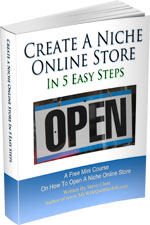
Ready To Get Serious About Starting An Online Business?
If you are really considering starting your own online business, then you have to check out my free mini course on How To Create A Niche Online Store In 5 Easy Steps.
In this 6 day mini course, I reveal the steps that my wife and I took to earn 100 thousand dollars in the span of just a year. Best of all, it's absolutely free!

